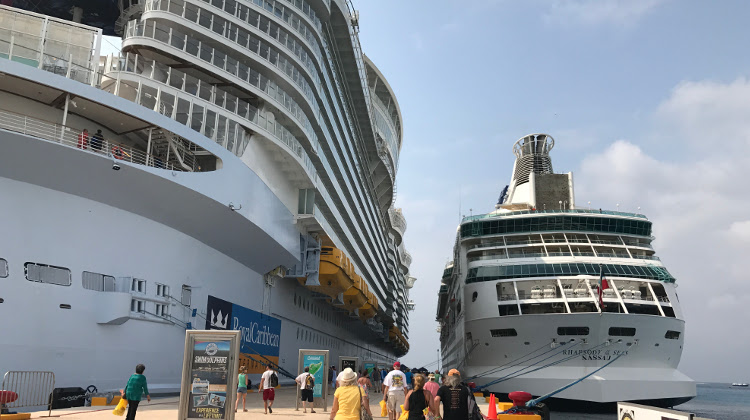
NOTE: This article was originally published on May 20, 2017, years before The Pandemic. I was cleaning up old posts on my blogs and thought I’d share this one again. Man, I really can’t wait to cruise and travel the world again!
We went on a cruise!
It was our fourth cruise. We’ve found that with three small kids, cruise vacations are easiest to manage.
We took a 7-night Royal Caribbean cruise that stopped in Honduras, Belize, Costa Maya, and Cozumel. I tried to continue my habit of daily writing while aboard the cruise. I’ve condensed it down to the top eight things I learned during our trip.
Lesson 1: Tampa
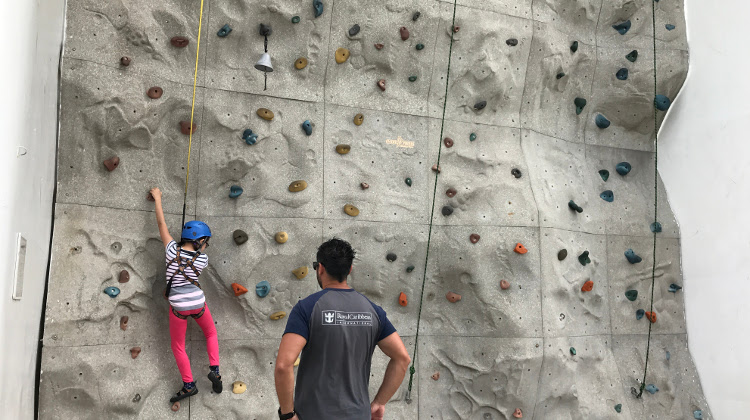
Our trip started at 6:45 AM on Saturday morning. We had an 8:25 flight from Dulles to Tampa. The plan was to wake the kids at 6:20 and leave the house at 6:40. As is typical when moving a family of five, we ran late. We got the kids at 6:45 and went out the door at 7:15. We forgot to tie the kitchen trash and thought about going back. Good thing we didn’t. Last time we had a flight to catch, we forgot baby’s shoes and went back for them. We missed the plane.
We were late to the airport. Much nervous rushing. But security was unexpectedly fast and courteous. Maybe it was the bad press and PR nightmares that put them on their best behavior (we took United). We got through quick and sighed with relief as we approached the gate around 8 AM. Just in time. We probably would have missed the plane if we went back to tie the trash.
With three kids in tow, the flight went smoothly until we began our descent into Tampa. Our seven-year-old daughter had pain in her ears that made her tear up in pain. We gave her chewing gum, and it helped. The two-year-old wasn’t so lucky. He cried the whole way down. Nothing I did could calm him. We got several looks of disdain from nearby passengers. Afterward, we got unsolicited advice from other travelers. Strangely, I felt frustrated but not embarrassed. I knew we were annoying other passengers, but what could we do? They were older passengers. They should understand. The younger ones who couldn’t understand were in no position to judge.
The point of taking vacation trips with family isn’t to relax. It’s to get new experiences together with your family. It doesn’t matter whether the experiences are good or uncomfortable. Vacations take you out of your routines and put you into those awkward situations that help you grow.
Lesson 2: At Sea, Part I
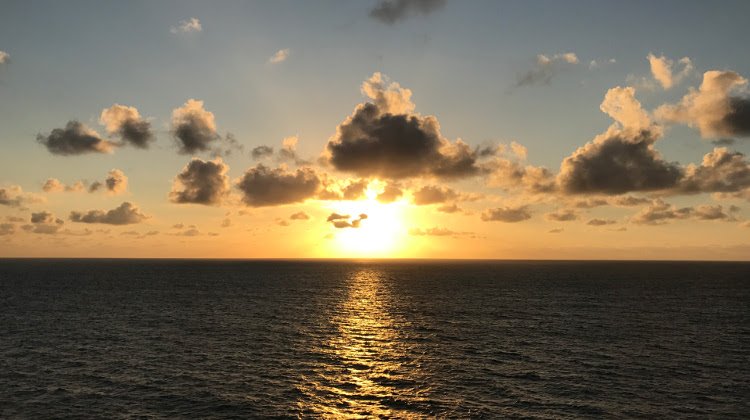
$26 per day for all you can drink soda.
$55 per day for all you can drink soda and alcoholic beverages (only the cheaper types. They won’t give all you can drink cognac or Guinness).
Is it worth it? Think about how much you spend each day on drinks. Is it even possible to get your money’s worth? If possible, is it desirable?
I always drink water at restaurants. At home, it’s water, coffee, tea, Zevia, beer, or wine. On a typical day, I drink coffee, tea, water, and a can of Zevia—about a dollar in total cost. Sometimes I’ll also drink an alcoholic beverage that costs me $2 tops. When I’m feeling particularly spendy, I might go for a Robeks smoothie—around $6. So that means I spend less than $3 a day on beverages at home. Even if I tried to spend as much as I can on drinks, I’d end up paying around $10.
Cruise ships use every marketing trick in the book to rationalize their pricing. False scarcity, time scarcity. Pricing obfuscation, false dichotomies and trichotomies in prices. Converting cash to onboard “cash.” Hard sells, soft sells. Everything in the marketing book. And it works.
If I knocked on your door and offered to sell you a six-pack of soda, two glasses of orange juice (FROM concentrate), three bottles of beer, and a bottle of cheap wine for $55, would you buy it? Why would that offer be worth it on a cruise ship?
Or maybe your goal is to be drunk as much as possible? Then why are you even there? You have much larger problems that a cruise vacation can’t solve.
Cruises make their profits on the upsells.
Day 3: Honduras
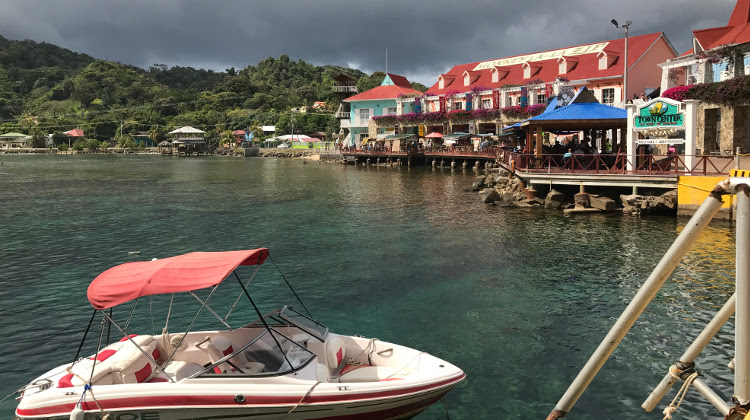
Honduras is one of the most dangerous countries in the world. Murder capital. But the world is a big heterogeneous place. When I visited Taiwan less than a year after 9/11, people told me they could never live in such a dangerous country as the United States. They saw the towers come down on TV. They imagined what would have happened if they were living in them on 9/11. Nope. America is not for them. Too dangerous.
Honduras is dangerous if you’re in the wrong parts at the wrong times. We docked in Roatán, a resort island off the coast. A body of water separated from the real Honduras with all its problems. Roatán is the idealized version of the country. The part that the locals don’t get to experience. The world is vast. Some of it is dangerous and unfriendly. Luckily for us travelers, 99% of the world is inhabited by people who try their best to be good human beings. The vast majority of people in the world are just trying to make a living and provide for their families. They want the same things you and I do. They want safety and freedom. They want happiness. Even in the most war-torn countries, what percentage of the population actually died? What percentage live? What percentage was unaffected? You might be surprised at the answer.
Lesson 4: Belize
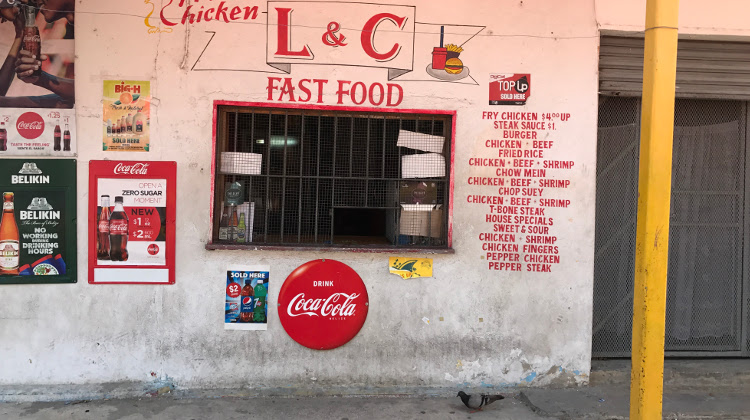
Compared to their foreign counterparts, Americans are larger than life. They tend to be taller, thicker, and often fatter.
Most people aboard my cruise were old, fat, and white. I know I’m making some sweeping generalizations here. But it’s true. I’d guess that more than 50% of the people on that boat were old, fat, and white. It’s the result of 60 years of eating well in booming America. Too much of a good thing takes its toll.
I watched them at dinner. I watched them at the buffet lines. I watched them wading in the pool. And it scared me. Two days into the cruise, I began eating better and going to the gym onboard the ship. I’m not white. I can’t do anything about getting old. But I vowed not to become fat.
Lesson 5: Puerto Costa Maya
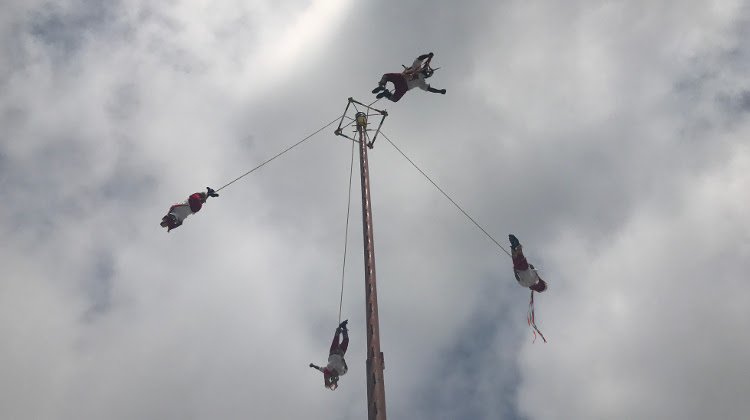
Puerto Costa Maya exists only because wealthy American tourists exist. Without the cruise ships, the town would be a sleepy fishing village at the edge of the ancient Mayan forests.
We got off the boat. At the end of the pier, we found a beautiful shopping area filled with hundreds of ways to spend American dollars. While my wife spoke with a hematite jewelry dealer, I stood marveling at four people perched at the top of a tall pole. They played drums and flutes. A crowd gathered below, expensive camera-phones readied. The four men jumped. They spun around and around the pole upside-down, suspended only by their ankles. They continued to play music as they continued to go around the pole upside-down. It was incredible.
Then the show was over. The crowd clapped and cheered. Each of the four men picked up a large hollow gourd and began walking in front of the crowd asking for tips. That’s when things got interesting. As the tip gourds neared onlookers, the crowd dispersed. People turned away from the tip jars as if they were radioactive. I stood in front of the hematite jewelry stand. With the crowd fully dispersed, one of the performers walked to me and waved an empty gourd in front of my face and said something in Spanish. He was visibly disappointed and angry. I could only tell him, “sorry, no money,” because that was the truth. I didn’t carry cash off the ship because I wasn’t planning on buying anything.
Later on, my wife decided she wanted to buy a hematite wristband. We went back on the ship to get some cash. I remembered the anguished look on the performer’s face and wanted to give them a couple of bucks, but they were gone. What went wrong?
They were doing it all wrong.
If I could give those performers one piece of advice, I would tell them to put a sign out saying, “tips for a good performance appreciated.” Then I would place a big hollow gourd under the sign. It’s all about expectations. The sudden request for tips caught people off guard. Travelers are taught to keep their wallets secured and out of sight. You need to give them time to discretely ready their money. Confusion over expected gratuities leads to a lot of bad feelings.
Lesson 6: Cozumel
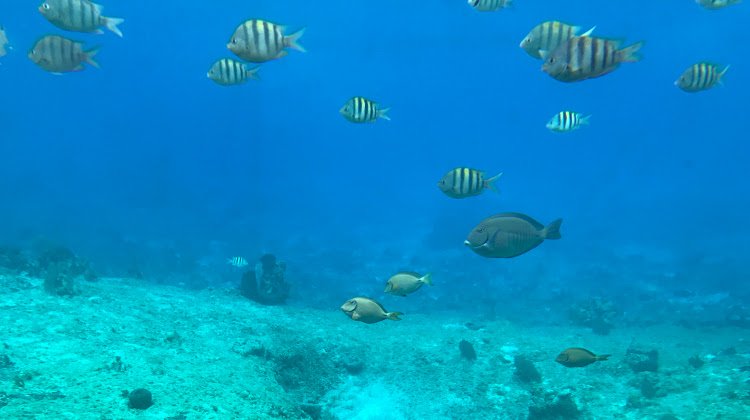
My wife and I wanted to experience the local life on our last port day. We left the kids on the ship at the onboard daycare and kids programs. Earlier in the day, we had already taken them on a semi-submarine tour that they later agreed was the highlight of the trip. Then we got off the ship and set off on our adventure.
We heard from one of the ship staff members that there’s a big grocery store in the nearby downtown area. We walked out the gates surrounding the tourist area and walked up the street towards downtown. We walked. And walked. We saw wild iguanas on the sidewalk. Then we walked some more. It was hot, and the roadside stands selling beer for beach access were beckoning. But we walked on. We asked a security guard where the supermercado was, in English. He pointed, and we walked on.
Eventually, we arrived at what looked like a Big Lots. It was an orange and yellow building with a tattered parking lot. Chedraui. The supermarket. Inside reminded me of Wal-Mart. Prices were in pesos and weights were in kilos. That’s tough for an American. We bought some bar soap (made locally by Proctor & Gamble) and tropical juices (made in Mexico by Coca-Cola). There isn’t much point in buying souvenirs these days because you can get everything you want off the internet.
We decided to take a taxi back. $8 flat fee with no B.S. That’s the way taxis should be. Our cab driver was Jesus. Literally. His name was Jesus (hay-SOOS). We asked if he spoke English. He said, “A little.” We repeated, “Un poco.” He asked where we’re from. To keep it simple, I said Washington D.C. He asked, “Do you like Trump?” I said, “No. Half of Americans don’t like him.” He said, “He’s crazy.” My wife said, “estupido.” He said, “Yes, that is the right word.”
Sometimes, the most memorable moments while traveling are the small, local interactions. You don’t need to swim with dolphins or jump off cliffs to enjoy travel. Just go somewhere new and always be curious.
Lesson 7: At Sea, Part II
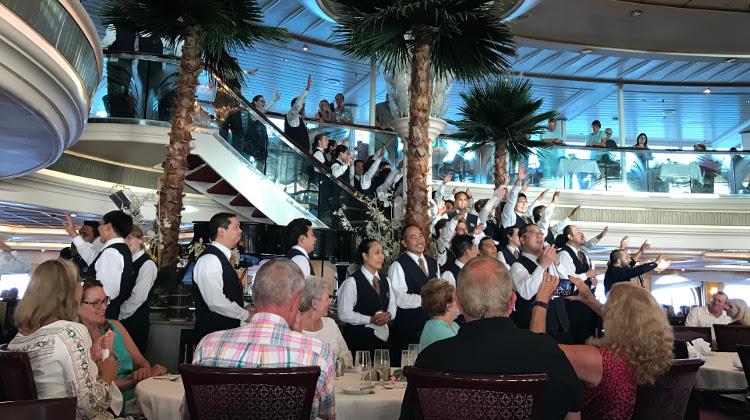
It’s amazing what humans can do now. We build floating cities. A cruise ship is basically a floating apartment complex. Actually, it’s more like a floating retirement home. It’s a temporary closed community that is entirely self-sufficient when at sea. The land is a cruise ship’s mothership.
That’s the glamorous side. The dark side is the tremendous waste, overindulgence, and exploitation. We were on the cruise because we had thousands of dollars in disposable income. That is, thousands of dollars we could dispose of and not miss. It is easy to spend your days at sea binge-eating, gambling, getting drunk, and indulging in every sinful pleasure. But it comes at a cost.
What about the cruise staff? I’ve spoken to many of them. Many of them have kids at home who no longer know who they are. They come from low-income families and work thousands of miles from home for years so they can send money back to their families. They can’t afford to indulge in cruise excursions for themselves, much less for their families. They are lonely. Yet, they smile for you every day and clean up your shit. Sometimes literally.
(I’ve changed names in this article for privacy)
Arnold has a wife, 17-year-old son, and 5-year-old daughter back in the Philippines. He’s been working on cruise ships for 13 years. He works 10-hour days seven days a week for several months at a time. Those are 70-hour workweeks! He hopes he can retire soon so he can finally be with his family. He also hopes his son can get a good job and take care of him.
Lijia comes from a wealthy family in China. She is young and single. She chose to work on cruise lines so she could travel the world. Like most of the lower-level cruise staff, she works 70-hour weeks for little pay (by American standards). As an assistant wait staff member, she is appalled by the amount of food waste people leave.
Martin also comes from the Philippines. He has a wife and 5-year-old son back home. His son doesn’t remember him. His son cries when Martin tries to hold him. Martin is a housekeeper on the ship. He spends ten hours a day cleaning people’s rooms with few breaks for months at a time. He misses his family more than anything else, but going home and living with his family in poverty is not an option for him.
When you’re on vacation, remember that everyone you interact with are also people. They have families to feed, goals to work towards, and dreams. In a way, they all look up to you. They want to be the ones on vacation someday.
Lesson 8: Dulles

The ship arrived in Tampa Bay early in the morning. Our 2-year-old stopped sleeping well after the second night of the cruise. The night terrors began after the fourth night. By the seventh night, we, as parents, were exhausted. We were more tired after the vacation than before. We were vacation refugees.
A friend told me that when you have a family, you don’t take family vacations—you take family trips. Because they aren’t vacations anymore, they’re trips of chaos. So true.
As a family of five, we survived a week living in a tiny cabin on a ship. This is a very useful piece of information. It means we don’t need to live in a big 4-bedroom home. We can still be happy traveling the world and living in smaller accommodations. We expand and shrink to fit our surroundings.
Leave a Reply